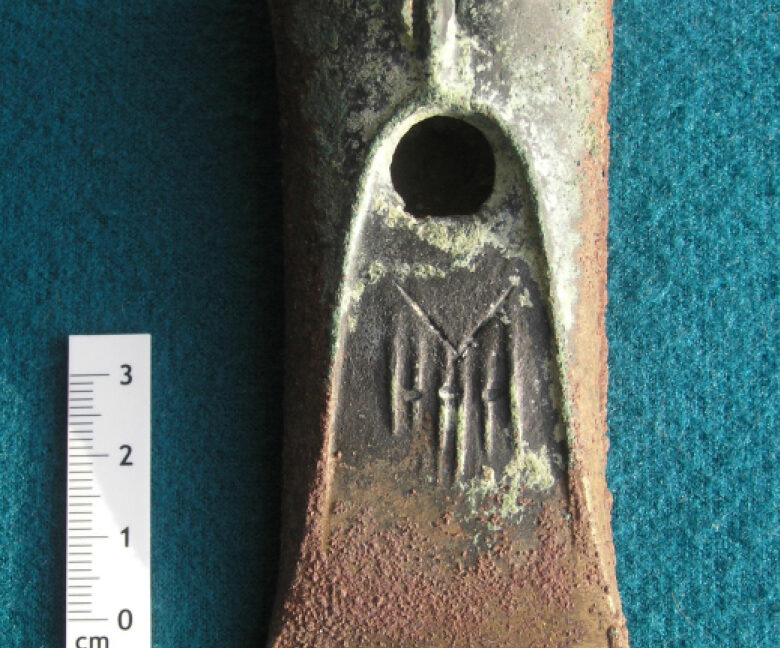“This area revealed few features,” they wrote in their recent paper (archaeologists refer to buildings and walls as features), “suggesting that metallurgical production may have been dispersed or occurred in less architecturally formalized spaces.” In other words, the bronze-smiths of ancient Semiyarka seem to have worked in the open air, or in a scattering of smaller, less permanent buildings that didn’t leave a trace behind. But they all seem to have done their work in the same area of the city.
Notice how the area where artifacts were found stretches beyond the visible outlines of ancient buildings.
Radivojevic et al. 2025
Notice how the area where artifacts were found stretches beyond the visible outlines of ancient buildings.
Radivojevic et al. 2025
Fragments of broken pottery found in Semiyarka
Radivojevic et al. 2025
Fragments of broken pottery found in Semiyarka
Radivojevic et al. 2025
Notice how the area where artifacts were found stretches beyond the visible outlines of ancient buildings.
Radivojevic et al. 2025
Fragments of broken pottery found in Semiyarka
Radivojevic et al. 2025
Connections between nomads and city-dwellers
East of the earthworks lies a wide area with no trace of walls or foundations beneath the ground, but with a scattering of ancient artifacts lying half buried in the grass. The long-forgotten objects may mark the sites of “more ephemeral, perhaps seasonal, occupation,” Radivojevic and her colleagues suggested in their recent paper.
That area makes up a large chunk of the city’s estimated 140 hectares, raising questions about how many people lived here permanently, how many stopped here along trade routes or pastoral migrations, and what their relationship was like.
A few broken potsherds offer evidence that the settled city-dwellers of Semiyarka traded regularly with their more mobile neighbors on the steppe.
Within the city, most of the ceramics match the style of the Alekseevka-Sargary people. But a few of the potsherds unearthed in Semiyarka are clearly the handiwork of nomadic Cherkaskul potters, who lived on this same wide sea of grass from around 1600 BCE to 1250 BCE. It makes sense that they would have traded with the people in the city.
Along the nearby Irtysh River, archaeologists have found the fainter traces of several small encampments, dating to around the same time as Semiyarka’s heyday, and two burial mounds stand north of the city. Archaeologists will have to dig deeper, literally and figuratively, to piece together how Semiyarka fit into the ancient landscape.
The city has stories to tell, not just about itself but about the whole vast, open steppe and its people.
Antiquity, 2025 DOI: 10.15184/aqy.2025.10244 (About DOIs).

